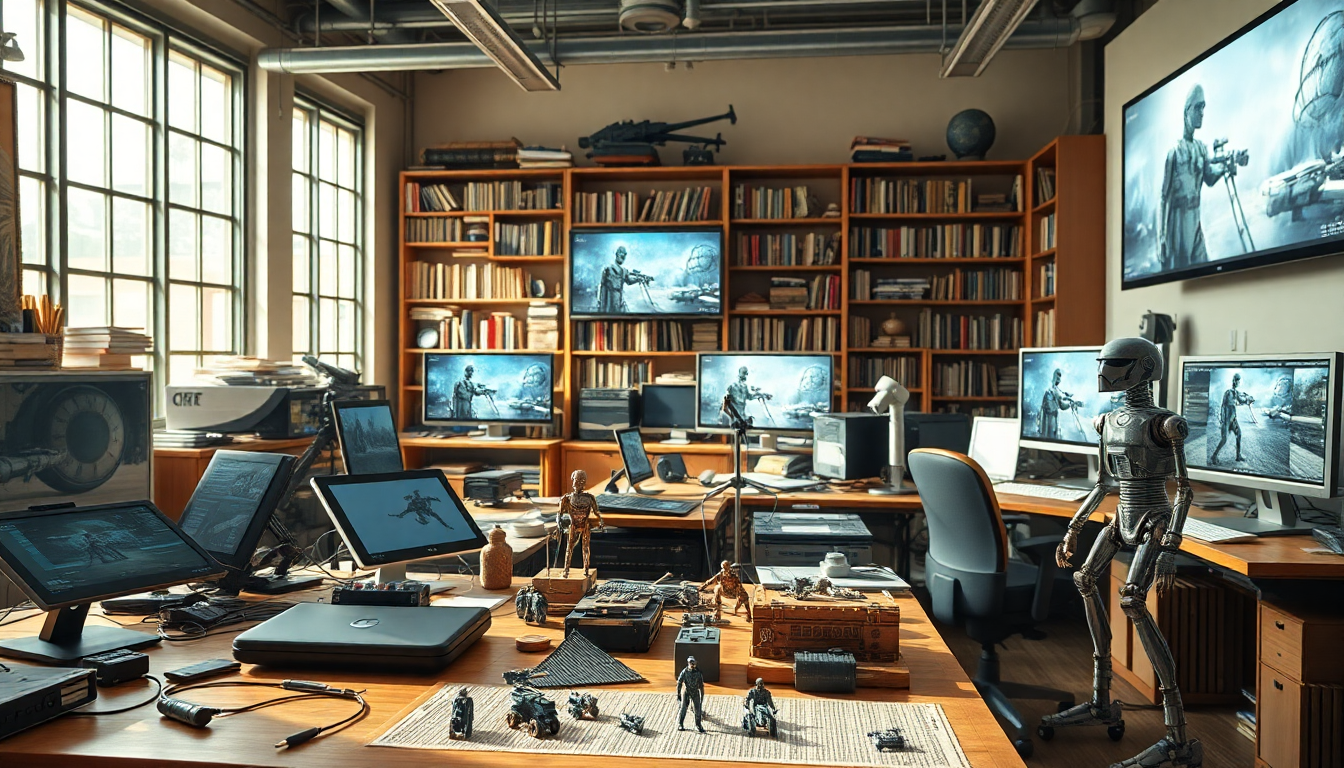Table of Contents
For 50 years, Industrial Light and Magic (ILM) has been a trailblazer in the visual effects industry, shaping the way we experience cinema. Founded in 1975 by George Lucas, this iconic company has not only kept pace with technological advancements but has also stuck to its core values. As ILM celebrates this major milestone, it’s a perfect time to reflect on its incredible journey and look forward to what’s next in the realm of storytelling through visual effects.
ILM’s Impact on the Visual Effects Landscape
Over the last five decades, ILM has completely changed how we enjoy movies. Think about it: the stunning intergalactic landscapes and the lifelike character animations we’ve seen on screen? That’s ILM’s handiwork. Their pioneering efforts have set the gold standard for visual effects, creating unforgettable moments that continue to wow audiences. Can you recall the first time you saw a lightsaber ignite or a dinosaur roar? Those moments owe a lot to ILM’s innovation.
As ILM marks this anniversary, it’s crucial to appreciate the vibrant culture of creativity that thrives within its walls. Jazz Tangcay, senior artisans editor at Variety, emphasizes the passion that keeps many of ILM’s employees there for decades. This dedication not only nurtures talent but also creates an environment where groundbreaking ideas can flourish. Even after being acquired by Disney in 2012, ILM has managed to retain a remarkable level of autonomy, proving that a strong culture can weather any storm.
New Dimensions in Animated Storytelling
Shifting gears, let’s dive into the recent episode of the ‘Daily Variety’ podcast, where the spotlight is on the new animated comedy, “Long Story Short.” Created by Raphael Bob-Waksberg, known for his work on “BoJack Horseman,” this show focuses on a Jewish family in Silicon Valley and represents a fresh take on animated storytelling. Its unique narrative structure, which weaves through different timeframes while tackling contemporary issues, invites viewers to engage with cultural stories that resonate on multiple levels.
Critic Alison Herman offers valuable insights into how the show authentically portrays Jewish traditions, particularly the observance of Yom Kippur. Instead of relying on tired stereotypes, “Long Story Short” digs deep into the significance of atonement, providing a richer exploration of cultural practices. This trend in animation—where creators strive for authenticity and nuanced storytelling—allows for deeper connections with diverse audiences. Isn’t it exciting to see stories that truly reflect real-life experiences?
The Future of Visual Effects and Animation
Looking ahead, the collaboration between visual effects and animation is set to soar even higher. The demand for high-quality, immersive experiences in film and TV is on the rise, prompting companies like ILM to push the boundaries of innovation. With cutting-edge technologies like virtual reality and real-time rendering coming into play, the storytelling possibilities are expanding at an astonishing pace.
Moreover, the conversation around representation in media is inspiring creators to explore new narratives and perspectives. Just like in “Long Story Short,” there’s a growing commitment to authenticity and cultural representation, which is becoming a central theme in animated series. This shift not only enriches the storytelling landscape but also enhances the viewing experience for audiences around the globe. How cool is it that we’re witnessing such a transformation in the way stories are told?


